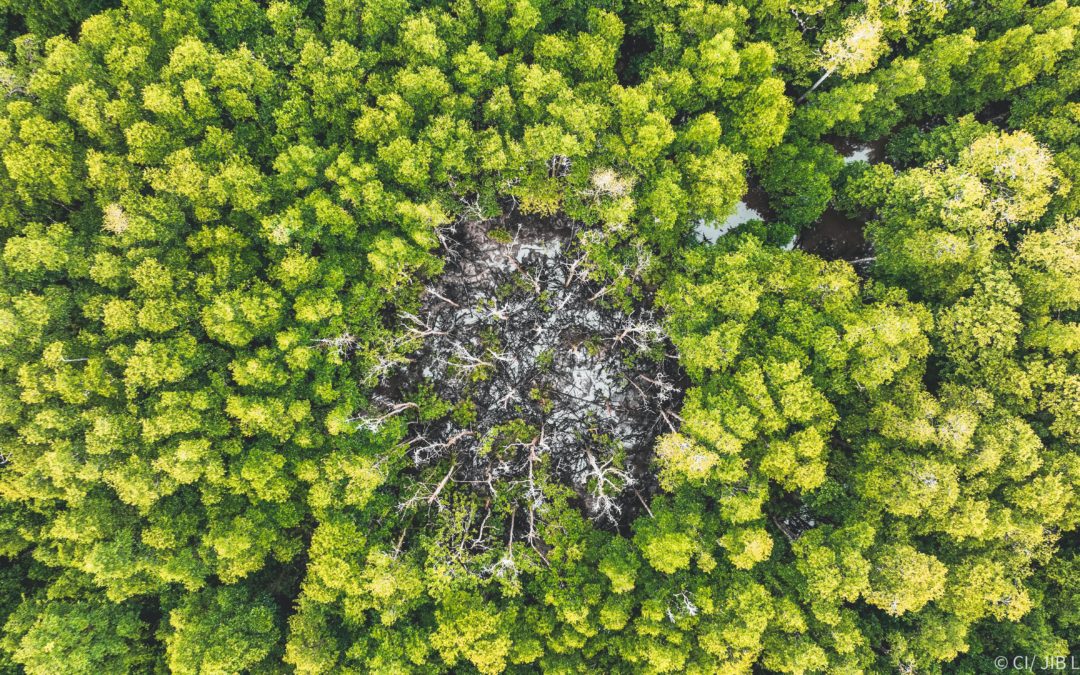
Protecting nature starts with science. Here’s a roundup of recent scientific research published by Conservation International experts.
1. Study: Targeted conservation offers massive benefits for people
A new study finds that conserving 30 percent of Earth’s land and 24 percent of the ocean would directly support the lives and livelihoods of more than 6 billion people.
Co-authored by Conservation International scientists, the study offers a new way to approach conservation by measuring and mapping areas that provide critical benefits for humanity — like fresh water, protection from flooding and fodder for grazing livestock.
“While nature matters everywhere, this study provides a new way to identify where people need nature to thrive,” said Conservation International scientist Dave Hole, who co-authored the study. “Moreover, it shows that a relatively modest proportion of Earth’s land and seas contributes 90 percent of the assets that are critical for human well-being.”
Notably, the study finds that the areas most beneficial to people are also home to at least 60 percent of all mammals, birds, reptiles and amphibians — and contain more than 80 percent of the world’s most significant carbon reserves. That means working to protect biodiversity and halt climate change can simultaneously have major impacts on human well-being.
“At a time when 1 million species are at risk of extinction and nature’s role in fighting climate change is widely recognized, this study offers a way for governments and others to prioritize investments of time and money,” Hole said. “Targeted actions can deliver a major return for both people and nature.”
The research is not only the most comprehensive global mapping of nature’s benefits to people, but its methodology can be adapted to national or sub-national decision-making — helping to better account for the impacts of conservation policies and investments on local communities.
2. Why are some animals on the ‘day shift,’ while others prefer night?
If an animal wants to avoid becoming another’s dinner, keeping opposite schedules is a good start.
That logic is borne out by a new study published in Nature Communications, which dives into the activity patterns of tropical forest mammals around the world. It finds that animals in the same “functional groups” — that is, species that share core characteristics, like carnivores or herbivores, for example — are remarkably consistent in the times of day or night in which they are active.
Using millions of images collected from camera trap data in 16 protected forests across the tropics, the researchers found that animals’ basic instincts — to eat or avoid being eaten — shape their activity patterns across broad species groups, regardless of geographic location.
“Herbivore species in South America are very different from those in Africa or Asia,” said Jorge Ahumada, a wildlife scientist at Conservation International who co-authored the study. “What’s surprising is that when it comes to the times in which they are active, they all behave the same — whether in Asia, Africa or South America. Across the board, they have been influenced by the same evolutionary forces — to capture prey or avoid predators.”
Species’ activity patterns matter when you consider a growing environmental concern: light pollution. While this study didn’t look specifically at light pollution, Ahumada says the research offers insights into how different species could be affected by it.
As cities become bigger and brighter, and electrical power lights up the sky across rural areas, the activity patterns of animals in these areas could be altered. For example, a predator that usually hunts at night to hide under the cover of the darkness might change the way it finds its food, if nights are now brighter than they were hundreds or thousands of years ago, Ahumada said.
“Light pollution will likely change the activity patterns of both nocturnal and diurnal species — affecting how they feed, avoid predators and find mates,” Ahumada added. “We need a better understanding of how increased exposure to artificial light might impact wildlife populations. Our study can support that understanding.”
3. When one place has many names, a new database sorts out inconsistencies
Analyzing global biodiversity data is complex — but what happens when a location has multiple names? Or different spellings?
Recording species’ sightings — which are often linked to understanding their health and abundance — requires researchers to use consistent place names. Discrepancies can lead to inaccurate data and flawed results.
That’s the core problem Conservation International scientist Patrick Roehrdanz set out to solve when he helped create a new tool to correct geographic inconsistencies.
“Place name data can be wildly inconsistent even within a single country, not to mention worldwide,” Roehrdanz said. “This quickly becomes a serious headache for researchers — one we wanted to alleviate.”
Roehrdanz, along with researchers from the University of Arizona and others, developed the Geographic Name Resolution Service (GNRS), which uses an algorithm to connect various databases that collectively contain millions of records of place names. The GNRS checks for flawed or inconsistent names — including abbreviations and spelling errors — and matches them to a location’s longitude and latitude coordinates. The tool then offers the correct, standard name, which can be used to help verify the location.
The approach is proving successful. Of the 270 million location records used for the study, only 1.9 percent correctly matched before using the GNRS tool. After the GNRS algorithm resolved the discrepancies, 86 percent of place names matched the corresponding geographic location.
Roehrdanz hopes the tool, which is free and publicly available, is a valuable addition to researchers’ processes.
“The ability to validate geographic data is critical to biodiversity research,” Roehrdanz said. “This massive jump in high-quality, consistent data opens the door for greater confidence in large-scale research to come.”
Mary Kate McCoy is a staff writer at Conservation International. Want to read more stories like this? Sign up for email updates. Also, please consider supporting our critical work.
If you’d like to read the original source of this article please click here Visit Source

